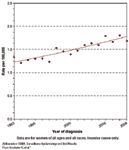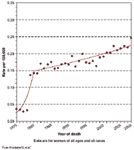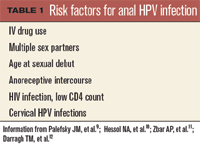Anal intraepithelial neoplasia and anal cancer: Who should be screened?
The association between the human papillomavirus (HPV) and cervical cancer has been well established. Ongoing research and interest have led to the development and improvement of screening methods and preventive vaccines that have effected an overall decrease in incidence rates of cervical cancer, especially in developed countries. In addition, the recently developed prophylactic vaccines against HPV provide the potential benefit of reducing cytologic abnormalities, leading to fewer referrals for colposcopy and excisional procedures.

Key Points
The association between the human papillomavirus (HPV) and cervical cancer has been well established.1 Ongoing research and interest have led to the development and improvement of screening methods and preventive vaccines that have effected an overall decrease in incidence rates of cervical cancer, especially in developed countries.2 In addition, the recently developed prophylactic vaccines against HPV provide the potential benefit of reducing cytologic abnormalities, leading to fewer referrals for colposcopy and excisional procedures.
HPV has also been established as a pathologic factor in the development of multiple other cancers, including cancer of the anus, penis, vulva, vagina, and oropharynx.3 Cancer of the anus has been receiving increased attention over the past few years. Although it is still a relatively rare malignancy compared with cervical cancer, the National Cancer Institute estimates that 6,230 new cases and 780 deaths from anal cancer will occur in the United States in 2012. The rates of anal carcinoma have been steadily increasing for the past 3 decades.4
Incidence




